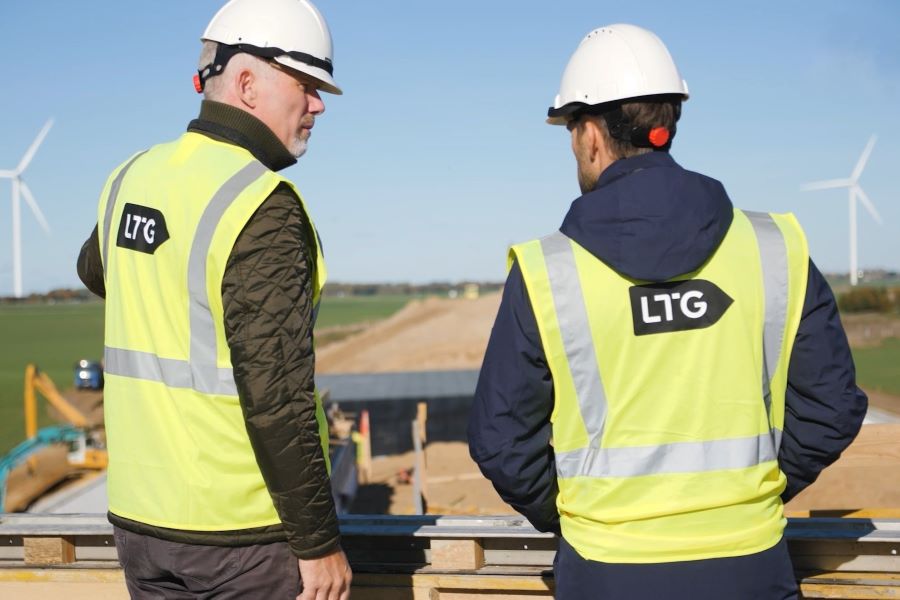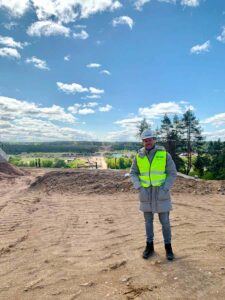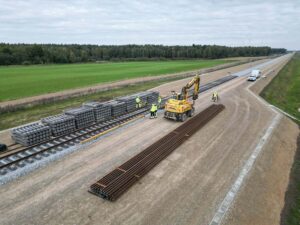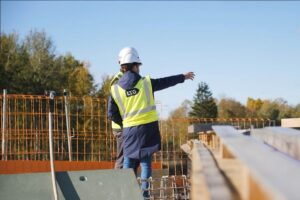Rail Baltica creates jobs and encourages Lithuanian talent to return home

This year, LTG Infra – the infrastructure company at the LTG Group – established a dedicated Rail Baltica Design Division to accelerate the development of the European-gauge railway. The division has attracted not only specialists from across the globe, but also Lithuanian professionals returning home after gaining extensive experience in high-speed rail projects abroad. For them, this is an opportunity to contribute to an infrastructure initiative that is historic for the Baltic region and strategically significant for Europe.
Mykolas Dumbrava, Head of the Rail Baltica Design Division, notes that until now, the Baltic countries lacked expertise in designing high-speed rail infrastructure.
“From the outset, our mission was clear – to ensure the rapid implementation of Rail Baltica and, in the future, other projects where experienced professionals can realize their potential, develop, and grow alongside ambitious initiatives. Today, this vision is becoming reality – the project has attracted highly qualified specialists. We are especially pleased that many of them are Lithuanians who have worked on complex railway projects abroad and decided to return, motivated by the opportunity to continue their careers in their homeland,” says Dumbrava.
The expanding Rail Baltica team in Lithuania continues to attract top talent in technical supervision, project management, risk management, and other critical areas.
Returning to apply international experience in Lithuania
One such professional is Artūras Minkevičius, Head of Safety at LTG Infra, who previously worked for several renowned international railway companies before returning to Lithuania to contribute to the Rail Baltica project. He spent over 11 years in the United Kingdom, where he worked in megaprojects such as HS2 high-speed rail stations, Network Rail, and other major infrastructure initiatives.
Minkevičius explains that his time abroad was always intended as a strategic step in his career development. He believed that the experience and knowledge gained would be invaluable upon returning to Lithuania, enabling him to contribute to the country’s progress in innovation, safety, and infrastructure development.
“Along with experience came a clear realization that my place is here in Lithuania, where I can apply my knowledge meaningfully and create value for the future of our country. I was familiar with Rail Baltica—my colleagues in Europe often referred to it as one of the most ambitious projects in the region. When I saw the job posting at LTG Infra, I knew it was time to come back. It was a decision guided by both heart and mind: to continue my professional growth and share my expertise in a project that connects the Baltic countries with Europe,” says Minkevičius.
He recalls that the recruitment process was highly professional and motivating, assessing not only technical expertise but also the willingness to share best practices and strengthen the culture of maintenance and safety.
“From the very beginning, I felt that the evaluation focused not only on my knowledge but also on my ability to inspire the team to pursue higher standards. There are still few specialists of this profile in Lithuania, so I viewed this opportunity as a meaningful challenge,” says Minkevičius.
Forming an international team
The Rail Baltica Design Division currently employs engineers from Lithuania, India, Morocco, and various European countries, as well as Lithuanian professionals who have previously worked in the United Kingdom, Denmark, and Sweden. Across the entire Rail Baltica team, the geographic diversity is even broader.
According to Head of the Design Division, Dumbrava, once candidates take a closer look at the Rail Baltica project, they realize it is far more than an infrastructure initiative—it is part of an international transport corridor that is shaping Europe’s future, connecting regions, and strengthening the security and resilience of the eastern flank.
Such an international project also provides exceptional opportunities for personal and professional growth. Minkevičius notes that in his daily work, he applies knowledge gained from working under the most advanced European principles, processes, standards, and best practices in railway safety, quality, and engineering systems.
“My role is to ensure the purposeful implementation of these principles throughout the design and construction processes, guaranteeing compliance with local and EU regulations, Rail Baltica requirements, and leading international standards, he explains.
In global projects, processes and management systems are clearly defined and standardized down to the smallest detail, with knowledge exchange occurring on an international scale. Lithuania is currently experiencing a phase of rapid progress, which makes this work particularly exciting. It is a unique opportunity to contribute to change, where every task becomes an investment in the country’s professional maturity.”
In his view, Lithuania today offers significant opportunities for professionals with international experience who are eager to apply their expertise at home.
“Projects like Rail Baltica demonstrate that we are keeping pace with Western Europe in terms of professional culture, technology, and ambition. Salaries are competitive, the working environment is modern, and the chance to contribute to a historic project is truly priceless,” he adds.
Working on the project – and unconventional motivation
Minkevičius shares a personal connection to the railway sector: his grandfather worked on the narrow-gauge railway between Panevėžys and Anykščiai in the Anykščiai region of Lithuania before being exiled to Siberia. His dream of continuing a career in railways remained unfulfilled.
“For me, Rail Baltica is more than just a job—it is a symbolic bridge between the past and the future, a personal mission to continue what my family started and to contribute to the history of Lithuanian railways,” he says.
Dumbrava emphasizes that experienced colleagues are particularly motivated by the professional challenges offered by the Rail Baltica project.
“These include ensuring that the design complies with European Union standards and requirements, as well as coordinating unified implementation by specialists from four countries—the three Baltic states and Poland. When so many countries, institutions, and experts are involved, challenges are inevitable. At the same time, this environment enables us to grow, innovate, and develop new operating models that will serve as benchmarks for future generations,” says Dumbrava.
Rail Baltica is a strategic project for both the LTG Group and the European Union and is the largest railway infrastructure project in the history of the Baltic States. Once completed, it will deliver an electrified European standard gauge railway line connecting Lithuania, Latvia, and Estonia with Central and Western Europe, strengthening regional integration, civil and military mobility, and the overall resilience of the transport system.





